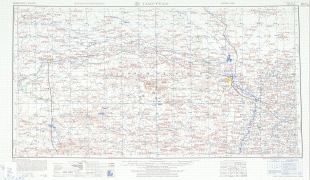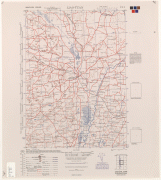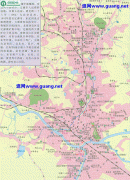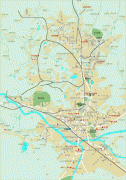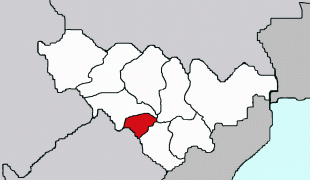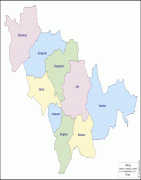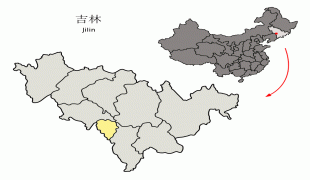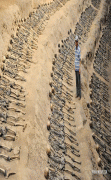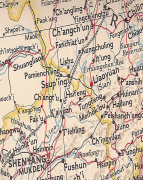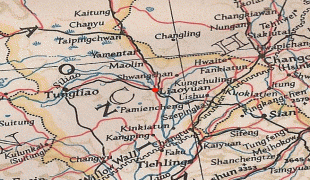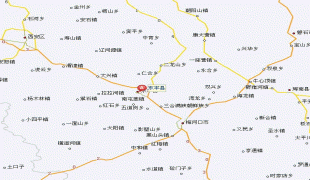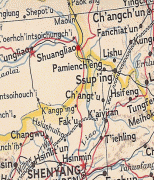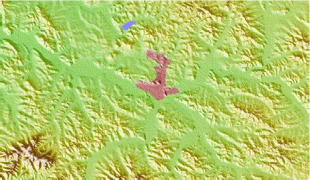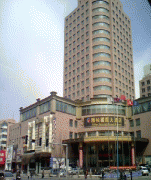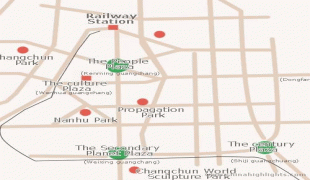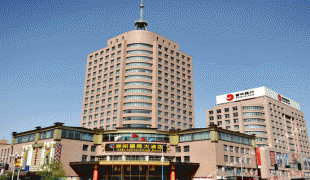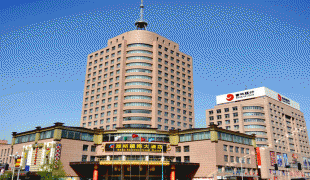Liaoyuan
Liaoyuan was an imperial hunting ground during the Qing dynasty, going by the name Shengjing Paddock (盛京圍場). Ordinary citizens were prohibited from entering this region until late 1800s, when waves of immigrants from Hebei, Shandong and Henan began to populate Manchuria (see Chuang Guandong). In 1902, Qing government established Xi'an County (西安縣) in this region, which became today's Xi'an District.
The discovery of coal underground shortly afterwards brought prosperity to the city. Between 1931 and 1945, Xi'an was an important coal-mining city in Manchukuo and also the place where American Army General Jonathan M. Wainwright was held as a prisoner. After World War II, Xi'an County was renamed to Beifeng County to avoid confusion with Xi'an in Shaanxi. During the Chinese Civil War, Xi'an was a focal point of the intense fighting between the Communist and Nationalist forces until the summer of 1947 when it was permanently captured by the Communist force. The city was renamed Liaoyuan (literally the source of the East Liao River) in 1952, and the county previously named Liaoyuan was renamed to Shuangliao. As a county-level city, Liaoyuan was under Siping Prefecture's jurisdiction till 1983, when it became a prefecture-level city, administering two districts and two counties.
Map - Liaoyuan
Map
Country - China
 |
 |
| Flag of China | |
Modern Chinese trace their origins to a cradle of civilization in the fertile basin of the Yellow River in the North China Plain. The semi-legendary Xia dynasty in the 21st century BCE and the well-attested Shang and Zhou dynasties developed a bureaucratic political system to serve hereditary monarchies, or dynasties. Chinese writing, Chinese classic literature, and the Hundred Schools of Thought emerged during this period and influenced China and its neighbors for centuries to come. In the third century BCE, Qin's wars of unification created the first Chinese empire, the short-lived Qin dynasty. The Qin was followed by the more stable Han dynasty (206 BCE–220 CE), which established a model for nearly two millennia in which the Chinese empire was one of the world's foremost economic powers. The empire expanded, fractured, and reunified; was conquered and reestablished; absorbed foreign religions and ideas; and made world-leading scientific advances, such as the Four Great Inventions: gunpowder, paper, the compass, and printing. After centuries of disunity following the fall of the Han, the Sui (581–618) and Tang (618–907) dynasties reunified the empire. The multi-ethnic Tang welcomed foreign trade and culture that came over the Silk Road and adapted Buddhism to Chinese needs. The early modern Song dynasty (960–1279) became increasingly urban and commercial. The civilian scholar-officials or literati used the examination system and the doctrines of Neo-Confucianism to replace the military aristocrats of earlier dynasties. The Mongol invasion established the Yuan dynasty in 1279, but the Ming dynasty (1368–1644) re-established Han Chinese control. The Manchu-led Qing dynasty nearly doubled the empire's territory and established a multi-ethnic state that was the basis of the modern Chinese nation, but suffered heavy losses to foreign imperialism in the 19th century.
Currency / Language
| ISO | Currency | Symbol | Significant figures |
|---|---|---|---|
| CNY | Renminbi | ¥ or 元 | 2 |
| ISO | Language |
|---|---|
| ZH | Chinese language |
| UG | Uighur language |
| ZA | Zhuang language |






